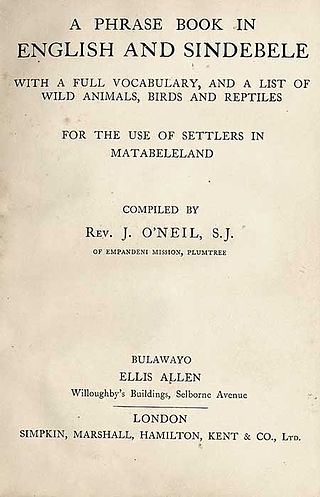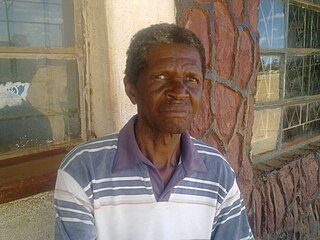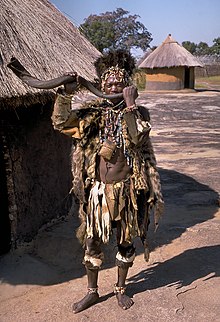
Zimbabwean music is heavily reliant on the use of instruments such as the mbira, Ngoma drums and hosho. Their music symbolizes much more than a simple rhythm, as the folk and pop style styled music was used as a symbol of hope for Zimbabweans looking to gain independence from Rhodesia. Music has played a significant role in the history of Zimbabwe, from a vital role in the traditional Bira ceremony used to call on ancestral spirits, to protest songs during the struggle for independence. The community in Zimbabwe used music to voice their resistance to their oppression, as one of the only weapons they had available to fight back with. In the eighties, the Music of Zimbabwe was at the center of the African Music scene thanks to genres such as Sungura and Jit. However, several performers were banned by state TV and radio leading to the closing of several music venues.
Chimurenga is a word in the Shona. The Ndebele equivalent is not as widely used since most Zimbabweans speak Shona; it is Umvukela, meaning "revolutionary struggle" or uprising. In specific historical terms, it also refers to the Ndebele and the Shona insurrections against administration of the British South Africa Company during the late 1890s, the First Chimurenga—and the war fought between African nationalist guerrillas and the predominantly-white Rhodesian government during the 1960s and the 1970s, the Rhodesian Bush War, or the Second Chimurenga/Imvukela.

Gweru, originally known as Gwelo, is a city in central Zimbabwe. It is on the centre of Midlands Province. Originally an area known to the Ndebele as "The Steep Place" because of the Gweru River's high banks, in 1894 it became the site of a military outpost established by Leander Starr Jameson. In 1914 it attained municipal status, and in 1971 it became a city.

Zvishavane, formerly known as Shabani, is a mining town in Midlands Province, Zimbabwe. Surrounded by low hills, it lies 97 kilometres (60 mi) west of Masvingo, on the main Bulawayo-Masvingo road. Other roads lead from Zvishavane to Gweru, 121 kilometres (75 mi) north, and Mberengwa, 27 kilometres (17 mi) south-west. It is also on direct rail links to Gweru and Beit Bridge which then link up with Harare and Bulawayo in Zimbabwe and to Maputo in Mozambique, and Pretoria in South Africa. It has a private airport serving the city.

Northern Ndebele, also called Ndebele, isiNdebele saseNyakatho, Zimbabwean Ndebele or North Ndebele, associated with the term Matabele, is a Bantu language spoken by the Northern Ndebele people which belongs to the Nguni group of languages.

The Shona people are a Bantu ethnic group native to Southern Africa, primarily living in Zimbabwe where they form the majority of the population, as well as Mozambique, South Africa, and a worldwide diaspora. There are five major Shona language/dialect clusters: Manyika, Karanga, Zezuru, Korekore, and Ndau.

Gwanda is a town in Zimbabwe. It is the capital of the province of Matabeleland South, one of the ten administrative provinces in the country. It is also the district capital of Gwanda District, one of the seven administrative districts in the province.
The Northern Ndebele people are a Nguni ethnic group native to Southern Africa. Significant populations of native speakers of the Northern Ndebele language (siNdebele) are found in Zimbabwe and in South Africa.

The beliefs and practices of African people are highly diverse, including various ethnic religions. Generally, these traditions are oral rather than scriptural and are passed down from one generation to another through folk tales, songs, and festivals, and include beliefs in spirits and higher and lower gods, sometimes including a supreme being, as well as the veneration of the dead, and use of magic and traditional African medicine. Most religions can be described as animistic with various polytheistic and pantheistic aspects. The role of humanity is generally seen as one of harmonizing nature with the supernatural.
Articles related to Zimbabwe include:

The Second Matabele War, also known as the First Chimurenga, was fought in 1896 and '97 in the region later known as Southern Rhodesia, now modern-day Zimbabwe. It pitted the British South Africa Company against the Matabele people, which led to conflict with the Shona people in the rest of Southern Rhodesia.

Christianity is the most widely professed religion in Zimbabwe, with Protestantism being its largest denomination.

Bantu religion is the system of beliefs and legends of the Bantu people of Africa. Although Bantu peoples account for several hundred different ethnic groups, there is a high degree of homogeneity in Bantu cultures and customs, just as in Bantu languages. Many Bantu cultures traditionally believed in a supreme god whose name is a variation of Nyambe/Nzambe.
Celia Winter-Irving, was an Australian-born, Zimbabwean-based artist and art critic who wrote extensively on Zimbabwean art, especially Shona sculpture, when she lived in Harare from 1987 to 2008.

Morgan Mahanya is a Zimbabwean Shona-language writer of detective fiction and war fiction. He has published 13 books since 1976, including books in Shona and in English, both fiction and nonfiction. Mahanya is one of the pioneering writers of detective stories in the Shona language. His books Chidamwoyo, Zvinoyera and The Wound are about the Rhodesian Bush War.

Barbara Makhalisa, also known by her married name as Barbara Nkala, is a teacher, Zimbabwean writer, Ndebele translator, novelist, editor and publisher, one of the earliest female writers published in Zimbabwe. She is the author of several books written in Ndebele, as well as in English, of which some have been used as school textbooks. Barbara is married to Shadreck Nkala. They have three adult children and six grandchildren.
Zimbabwe Newspapers (1980) Limited, operating as Zimpapers, is a state-controlled Zimbabwean mass media company. Originally a newspaper Publishing company, in the 2010s it expanded its operations to include commercial printing, radio and television. The company's portfolio includes over a dozen Magazines and newspapers, including The Herald and The Chronicle, several radio stations, and a television network. It is the largest newspaper publisher in Zimbabwe.
The Njelele Shrine is a cave which is of significant spiritual importance in Zimbabwe; pilgrims visit it annually for ritual purposes prior to the beginning of the rain season. The shrine is inside a cave that is located in the Matobo Hills in the Khumalo communal area approximately 100 kilometres south of Bulawayo, Zimbabwe's second largest city. The shrine is found in a solid granite kopje which is not different from a plethora of others that are in the vicinity. The outthrust of this shrine is situated on a mountain range that runs westwards. The shrine has "three naturally hidden entrances that wind up and down among overhang granite boulders." The cave is not the main feature of Njelele but the gallery in the rocks. It is also endowed with a number of small tunnels, which lead to the shrine's various chambers from the narrow entrance which is between two tall rocks. Njelele is mainly known as the rain-making shrine however, it is visited for other purposes such as asking for forgiveness after society's wrongdoings, asking for cures for human and domesticated animals diseases. An assortment of skulls and horns of big game, iron hoes, clay pots containing water, cloth and beads, piles of tobacco, hatchets, and spears are kept in one of the caves at Njelele. Some scholars believe that these were objects offered to the presiding deity. In the 1960s and 70s, this shrine was consulted by politicians and liberation fighters. One notable member who visited the Shrine was Joshua Mqabuko Nkomo the then leader of ZIPRA and former Zimbabwean Vice President. It is believed that some time ago, a voice came from the Njelele rocks instructing those who would have visited it on what to do; even Nkomo acknowledged this in his autobiography TheStory of My Life. The voice was last heard in 1974; it disappeared due to the desecration of the shrine.
George Payne Kahari was a Zimbabwean diplomat, educator, arts administrator and writer. He served as an ambassador to Germany, Italy and Czechoslovakia. He has been Visiting Professor of Modern African Literature at a number of American universities. After his stint as a diplomat, Professor Kahari was the first black director at the National Gallery of Zimbabwe. He was one of the founders of the Catholic University of Zimbabwe, which was established in 1999.
Ndabezinhle Sibanda Sigogo was a Zimbabwean writer born on 2 June 1932 in Filabusi District (Matebeleland). He died in 2006. His father, who had ten wives, died when he was six years old. According to custom, his father's brother took care of the deceased's wives and children, leading to his mother leaving. As a young boy, he had an unsettled life, full of anxieties and fears.
















